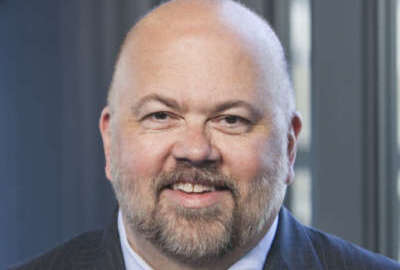
Will the pandemic trigger the long-predicted retirement wave?
If the government starts pushing employees to show up in offices without mandating masks and social distancing, we could see an uptick in retirement rates.
For many years we have been hearing about a “retirement tsunami” where the federal government will see large numbers of older workers heading for the door. I have said repeatedly that the numbers that were used to support those predictions were flawed. They simply looked at the retirement eligibility of current workers and projected the percent who would be eligible to retire in a few years. Such projections are meaningless, because they assume a static workforce. What really happens is that people leave the workforce and are replaced with new people. The long term turnover rate in the government, like every other organization, is 100%. Everyone leaves eventually.
The message we should have taken from the numbers is that the federal workforce is aging and the government is not effective at hiring young people. The federal government has 127,000 more employees (303K) age 60 and over than employees (176K) under age 30. Those 303,000 workers in their 60s, 70s and older are mostly eligible to retire. One of the greatest risks of a workforce with many employees eligible to retire is the likelihood that some event could trigger an exodus. Given the government’s hiring challenges, a retirement wave of tens of thousands of employees over and above typical attrition numbers could be catastrophic.
So what does that have to do with the COVID-19 pandemic? In recent days federal agencies have begun sharing their reopening plans. Those plans, with three phases of gradual reopening, are raising a number of concerns. For example, Federal News Network reports that the Office of Personnel Management and the Department of Energy will provide masks to workers, but wearing them will not be mandatory. As we have heard from health care experts, the primary benefit of masks is protection of people around the mask wearer. A person who is ill but not symptomatic could wander around an office infecting many colleagues. The lack of a mask wearing requirement may make many older workers hesitant to go into an office. While agencies are saying they will continue telework and weather and safety leave for high risk employees, they cannot offer weather and safety leave forever, and there is no guarantee the option to telework will continue indefinitely.
What happens once you are in the office is only one part of the work equation. How do employees get to work? In Washington D.C. and other cities, many federal workers rely on public transportation. Maintaining social distancing is difficult on a bus or train. Mask wearing is required in many locations, but it is not always enforced. Driving may not be an option for people who are hesitant to get on a train or bus. In Washington D.C. parking can easily cost $200 per month or more. Even if the employee can afford the cost, the number of parking spaces is limited.
That puts many older workers in the position of deciding whether continuing working is worth the risk to their health. For long term employees the math can be even worse. Once an employee is eligible to retire, s/he is working for fewer real dollars every month. Is it worth a few thousand dollars to continue going into work, when that trip could cause you to be infected with a potentially fatal disease?
Agencies appear to be acting in good faith. Will that continue? Even if it is in the political interest of the president to have a fully open and functioning government?
If the government starts pushing employees to show up in offices without mandating masks and social distancing, we are likely to see a significant uptick in retirement rates — particularly for employees who are older and who fall more squarely in the middle of the at-risk population. If that happens, I have little confidence the government can fill those jobs in a timely manner with high quality candidates. A retirement tsunami at last? No, but certainly a wave that can cause significant damage to the ability of agencies to carry out their missions.
Jeff Neal authors the blog ChiefHRO.com and was previously the chief human capital officer at the Department of Homeland Security and the chief human resources officer at the Defense Logistics Agency.
Copyright © 2024 Federal News Network. All rights reserved. This website is not intended for users located within the European Economic Area.
Related Stories




